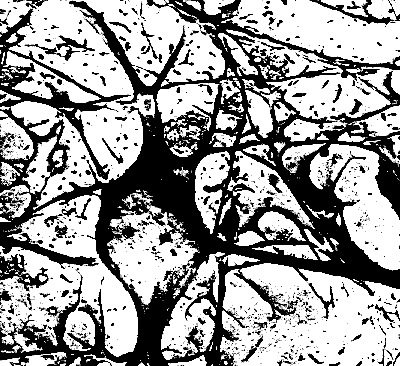23 Aug Specialized Instruments – Brain Areas
Finding Functions on a Map

Much of what we know about the functions of areas of the brain was discovered by Korbinian Brodmann in the early 1900s. He mapped the brain by sticking in many electrodes, eliciting cognitive responses such as making a sound or showing an image to trigger perception, and monitoring electrical activity. Now, techniques are less intrusive because we can get the same sort of information with even greater accuracy with electromagnetic imaging. Modern sensors that use techniques such as computed tomography (CT or CAT), magnetic resonance imaging (MRI) and positron emission tomography (PET) penetrate but don’t lacerate. The maps of the brain Brodmann produced around 1909 show 47 to 52 areas which are still in use today.
| Understanding Context Cross-Reference |
|---|
| Click on these Links to other posts and glossary/bibliography references |
|
|
|
| Prior Post | Next Post |
| How Do You Think? | Coordinating Neural Pathways |
| Definitions | References |
| perception | Korbinian Brodmann |
| electrical activity | Pansky 1988 |
| cytoarchitecture | A Brain Explorer |
“The distribution pattern of cerebral cortical cells varies in different regions of the brain. Based on morphologic characteristics (some obvious, others very subtle), several cytoarchitectural maps have been drawn, dividing the cerebrum into areas. Some areas have known specialized functions, while for others no clear function has been demonstrated. These functions have been arrived at primarily by electrically stimulating the area and observing the response elicited” (Pansky, et al., 1988, p. 204).
The illustration below shows a sagittal section with Brodmann’s areas that are visible identified by a number. Along with the numbers, the areas are given names, but in the interest of space they are not listed here.
Cytoarchitecture – Brain Areas
A cytoarchitectural map shows specialized functional areas of the cerebrum. Areas 1 through 3, for example, are the primary sensory cortex. Area 4 is the primary motor area; the cortex in this area is unusually thick (about 4.5mm). Motor-skill development occurs in Area 6, the premotor area. Areas 5 and 7 form the somesthetic association cortex where sensory knowledge is integrated or correlated so one can identify an object in hand with closed eyes by such clues as texture, shape and weight. This function compares with that of the diencephalon, where sensory input is correlated.
The table below shows examples of the functions discovered for the numbered areas. I have focused on areas that may be critical to human language understanding.
Table 1.10.1: Some Numbered Areas of the Human Brain and their Functions
| 1 – 3 | The sensory cortex processes sensory feedback from the whole body. It has direct links with the peripheral nervous system. |
| 4,6, 8 | These areas control the muscles we need to form facial expressions. Game show hostesses have this area hardwired to gooey sweet. |
| 5, 7a, 7b | Each of the senses gives us cues to help us in analyzing and filtering the flood of input to the rest of the senses. This area puts it together. |
| 9 – 12 | The prefrontal cortex is concerned with abstract reasoning, value judgement, self-control, foresight and discretion. |
| 17 | The visual cortex receives and decodes visual input. The signals are generated in the retina and sent to area 17. |
| 18 – 19 | The occipital eye field controls involuntary eye movements induced by visual stimuli. Primary cortex handles visual input. |
| 22 | The receptive language centers, including the auditory association cortex, help us interpret words we hear or read (in this case hearing). |
| 41 – 42 | This is a receptive language center for auditory input. When we hear things, this is the first area activated to convert sounds into words. |
| 40 | There are times when we need to use sounds to help us interpret what we see and vice-versa. This association process occurs in this area. |
It is not just us Artificial Intelligence practitioners who are interested in this stuff. If you find this interesting, take a look at different folks’ perspectives by clicking these links:
| An Academician | An Animator | An Attorney | A Doctor | A Non-Profit |
| Click below to look in each Understanding Context section |
|---|
| Intro | Context | 1 | Brains | 2 | Neurons | 3 | Neural Networks |
| 4 | Perception and Cognition | 5 | Fuzzy Logic | 6 | Language and Dialog | 7 | Cybernetic Models |
| 8 | Apps and Processes | 9 | The End of Code | Glossary | Bibliography |









